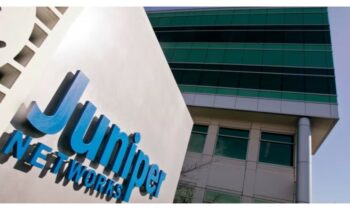The headlines about today’s labor market are screaming for change and disruption in the recruiting process. Business can’t find people to work. The unemployed unable to find work. Square in the middle of the contradiction — Recruiting.
Even for those who do successfully navigate the recruiting process to a new job many are dissatisfied with the recruiting process itself. A 2019 PwC survey of 10,000 people found that 49% turned down a job offer due to the company’s poorly handled recruiting process. And that doesn’t say anything about the satisfaction of those who didn’t turn down a job offer.
And it’s not just candidates that are frustrated by the recruiting process and tools. Lou Davis described on Quora the challenges he faced while recruiting for 9 positions at the company he worked for. The process was difficult and loaded with chances to simply pass by great candidates. From a difficult to use applicant tracking system to scheduling so many interviews in a day that by the end of the day the candidates were all a blur.
Recruiters. Hiring managers. Candidates. HR staff. Very few are happy with the recruiting process.
While the Future of … some industries may still be in the distant future, there is clear need for disruptive change in the recruiting process and onboarding process.
The Future of Recruiting
Change can be evolutionary or revolutionary, incremental or disruption. The recruiting industry is prime for both. With evolutionary change individual players and business will focus on an immediate pain point and find a way to at least reduce the pain. With a disruptive change, something new is build as a result of reframing the question being asked.
Before being able to address the Future of Recruiting it is important at every level of the industry to define what is meant by recruiting as well as the expectations of each of the stakeholders in the process.
Consider these questions for yourself and your organization.
- Where does recruiting start and end?
- Do you continue recruiting through the onboarding process to not lose a candidate?
- Do you continue recruiting your existing employees because if you aren’t recruiting them someone else is?
- Is recruiting simply sifting through resumes and setting up appointments between job candidates and hiring managers?
- What should each stake holder in the recruiting process expect from the others?
- What promise are recruiters offering to candidates and hiring managers?
- What promise are candidates offering recruiters and hiring managers?
- What promise are hiring managers making to recruiters and candidates
- Do the corporate executives support a culture where hiring managers can both be accountable as well as forgiven if there is a hiring “mistake”? Does this lead to hiring managers searching for the impossible candidate?
Ghosting has become a bigger problem for companies, where candidates just simple don’t show for interviews or even their first day of work. Similarly, job candidates wonder if their resumes go into a black hole when they apply for a position nor is there any clarity as to why they didn’t get a job offer.
How do we fix recruiting to work better for everyone?
“You’ll win top talent in a tight labor market by competing on more than salary. Our analysis of this data shows that your firm’s culture and the experience you provide people is your differentiated asset.” ~ Bhushan Sethi, Principal, Joint Global Leader, People and Organization, PwC US
Before searching out new recruiting tools or reworking the entire recruiting process for your organization take the time to developing your brand promise for all of the stakeholders in the recruiting process. Your recruiting culture will become a brand asset in addition to business functions you are where the hiring is occurring.
Hiring managers, recruiters and job candidates alike would like a faster, easier way to connect. Hiring managers and recruiters don’t want to be overwhelmed with resumes. Job candidates want to understand what parts of their experience are most relevant for the roles so they can decide if the job is right for them or not and, if so, highlight the right experience on a resume and in interviews. Candidates look for feedback to help them make better choices in the positions they apply for as well as perform better in interviews. Both candidates and hiring managers want a more frictionless, faster process. Recruiters acting as a gate keeper has the benefit of saving the hiring manager some time but also can lead to missing qualified candidates the manager might consider who are missing key words on a resume.
How do we do this?
PwC’ report on The Future of Recruiting offers two important suggestions.
1. Make savvy tech investments that put the candidate’s experience first.
2. Keep the process human-centered
Brady Xu, CEO of Hirect US, agrees. Hiredc has developed an easy-to-use platform that enables hiring managers and job candidates to connect and have a real conversation in real time, eliminating the friction of filling out applications, filtering resumes and waiting for someone to set up a meet sometime in the future — a process that can take weeks for many firms.
“The platform will allow recruiters to directly chat with candidates without them submit their application first, which means you have both “outbound” and “inbound” job seekers profiles. It will significantly accelerate the hiring efficiency.”
~ Brady Xu CEO Hirect
Similarly, Giridhar Akkineni founded AkkenCloud to address candidate engagement throughout the recruiting process after himself struggling with a patchwork of systems that got in the way of effective recruiting.
“Having that candidate engagement was very critical and really difficult to achieve. . . And what we do, along with all the core functionality, including the CRM, applicant tracking system, HR management, onboarding, time and expenses and payroll, which are core to the staffing business, we offer several tools that are also integrated as part of our platform to be able to easily engage and manage your candidate pool.”
If you want to look further into the future, consider emerging holographic technology. Imagine interviewers and candidates meeting vitually in the Metaverse.
The frustration with the recruiting process and technology is certainly inspiring innovation.
Where do we go from here with the Future of Recruiting?
As of August 2021 there were 1.6 million more job openings than unemployed people. Employers are struggling to find qualified candidates. Job candidates are wondering why they are being passed over, even if they have most, if not all, of the qualifications in the job descriptions. Even when matches are made the recruiting process can be so off-putting that nearly half of job candidates will turn down a job offer.
The time to create the Future of Recruiting is now. Solutions need to remove barriers between hiring managers and job candidates while simultaneously not overwhelming hiring managers with resumes and interviews. Every company struggling to find qualified candidates needs to examine their recruiting process and recruiting culture to identify areas of improvement. Technology solutions need to clearly fill in gaps in the recruiting process and not simply apply the latest technologies, like AI, to a process that isn’t working. The principle of “Fail Fast” only works if you learn and adapt from the failure. Technology and humans must work together in the recruiting process, instead of each other.
About the Author
Larry Boyer, CBE, ACC helps people and businesses prepare for the changing and evolving economy of the 21st Century. He was recognized by Onalyica as a Key Opinion Leader for Industry 4.0 and #34 on Onalytica’s Future of Recruitment list. . As a recognized leader in advanced analytics, finance & economics, future technologies and personal development he speaks, writes and consults on these topics and their impacts on businesses and people. His book “The Robot In the Next Cubicle: What You Need to Know to Adapt and Succeed in the Automation Age is available for order.
Source:https://medium.com/@LarryBoyer/the-future-of-recruiting-cf5b5101dc6f



